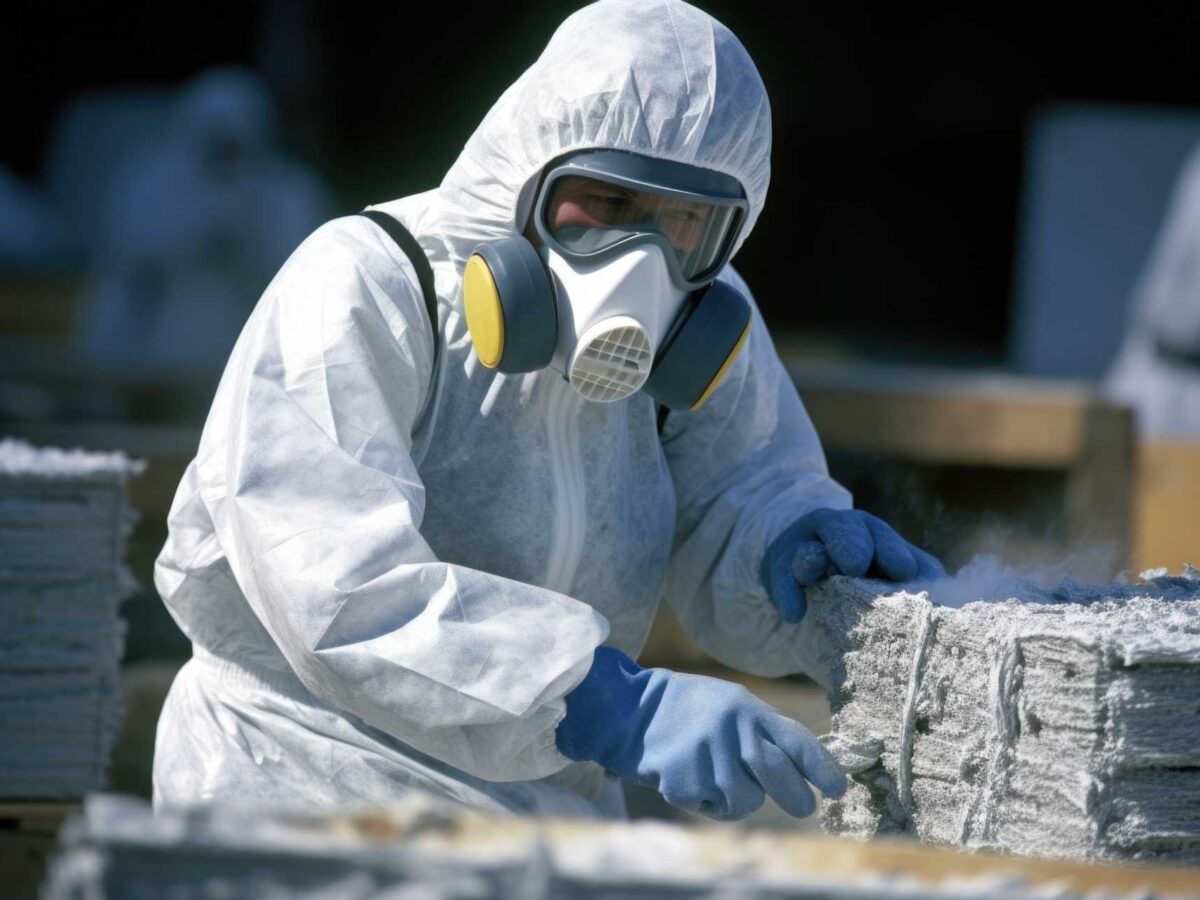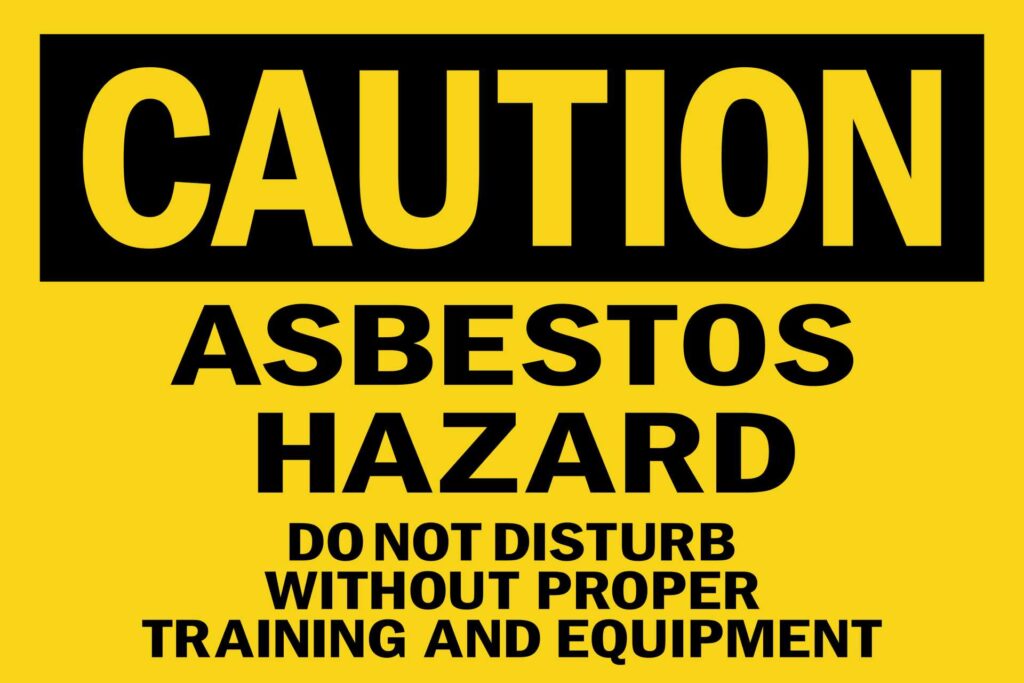Welcome to a comprehensive guide on Asbestos Training for restoration professionals. Handling asbestos demands expertise and awareness due to its hazardous nature. This guide delves into the critical aspects of asbestos handling, emphasizing the significance of Asbestos Training. From identifying risky materials to legal regulations and the pivotal role of proper certification, this resource is designed to highlight why Asbestos Training is indispensable in restoration work.
Identifying Hazardous Materials
Understanding Asbestos and Its Health Risks
This section delves into the health risks associated with asbestos exposure. Asbestos, when disturbed, releases microscopic fibers that, upon inhalation, can cause severe respiratory issues and long-term health problems. Robust asbestos training enables professionals to identify potential asbestos-containing materials, effectively mitigating these risks.
Asbestos Recognition in Restoration Work
Recognizing asbestos in restoration projects is crucial to prevent accidental disturbance and exposure. Training programs empower professionals to identify materials potentially containing asbestos, ensuring safe handling and reducing the risk of harmful exposure to themselves and others.
Legal Implications and Regulations
Laws and Regulations Guiding Asbestos Handling
Understanding the laws and regulations governing asbestos handling is essential. Comprehensive training enlightens professionals about these legal frameworks, emphasizing compliance to avoid legal repercussions and ensuring the safety of everyone involved in restoration projects.
Consequences of Improper Asbestos Management
Improper handling of asbestos can lead to severe consequences, including legal liabilities and potential health issues. This section stresses the significance of proper training in managing asbestos, highlighting the drastic impact of neglecting safety protocols.
Importance of Proper asbestos Training
Advantages of Asbestos Safety Training
Proper asbestos training offers various advantages, including heightened safety awareness, minimized health risks, and better compliance with safety regulations. It equips professionals with the necessary skills to handle asbestos-containing materials safely.
Certification and Compliance Standards
Certification in asbestos safety training ensures professionals meet industry standards and regulatory compliance. Highlighting the importance of certifications, this section underscores the need for ongoing education to maintain expertise and uphold safety protocols.
Training Asbestos Modules and Curriculum
Asbestos Training programs incorporate comprehensive modules designed to cover the fundamental aspects of handling asbestos safely. These courses delve into various topics, including the identification of asbestos types, potential health risks associated with exposure, and the implementation of safety protocols to mitigate these risks effectively.
Essential Components of Asbestos Training
Within these training modules, essential components encompass identifying asbestos in different settings, understanding its properties, and learning the proper procedures for safe handling and disposal. Additionally, participants are educated on the legal framework and regulations governing asbestos management in various industries.
Practical Aspects of Handling Asbestos Safely
Practical sessions are integral to Asbestos Training, enabling professionals to apply theoretical knowledge to real-life scenarios. These hands-on experiences involve donning personal protective equipment (PPE), practicing safe containment methods, and adopting proper decontamination procedures.
Mishaps Due to Lack of Asbestos Training
On the other hand, documented incidents resulting from inadequate asbestos training underscore the critical importance of proper education and safety protocols. These examples illustrate the potential dangers of mishandling asbestos and emphasize the necessity of thorough training.
Industry Best Practices
Recommended industry best practices, an integral part of Asbestos Training, outline standardized procedures for safe handling, abatement, and disposal of asbestos. These guidelines align with regulatory requirements and emphasize continual adherence to safety measures in asbestos management.
Safety Measures in Asbestos Remediation
Focus on safety measures during asbestos remediation includes meticulous containment protocols, air quality monitoring, and meticulous disposal practices. These measures are essential to ensure controlled asbestos handling and mitigate potential health hazards.
Training Resources and Institutions
Understanding the availability of accredited training programs is crucial in asbestos safety. These programs offer comprehensive knowledge and hands-on training necessary for professionals in the restoration industry. Institutions providing these accredited courses ensure adherence to safety protocols and legal standards.
Accredited Training Programs
Accredited programs offer detailed insights into asbestos identification, handling, and disposal. They provide comprehensive education, including theoretical and practical aspects, ensuring trainees understand the risks associated with asbestos exposure. These programs also focus on the legal obligations and safety measures necessary to safeguard workers and inhabitants.
Accessible Resources for Asbestos Education
Apart from formal programs, various resources cater to asbestos education. Online platforms, government guidelines, and industry publications offer accessible information on asbestos identification, safety protocols, and regulatory standards. These resources empower individuals to enhance their understanding and take necessary precautions.
Continuous Learning and Updates
Continuous education is crucial in an evolving field like asbestos safety. Staying updated with the latest information, advancements, and regulatory changes is fundamental. Ongoing education ensures professionals maintain their knowledge and skillsets, ultimately contributing to safer work practices.
Importance of Staying Updated with Asbestos Information
Regular updates prevent professionals from relying on outdated practices. Staying informed about emerging risks, technologies, and best practices enhances their ability to handle asbestos safely. Ongoing education reinforces the importance of compliance with evolving safety regulations.
Ongoing Education and Advancements in Asbestos Training
Advancements in asbestos training continually refine practices and introduce innovative techniques. Ongoing education not only ensures compliance but also facilitates the adoption of newer, safer methods. These advancements contribute significantly to the safety of restoration professionals and occupants in asbestos-prone environments.
Specialized Training for Asbestos Abatement
Advanced Techniques in Asbestos Removal
Advanced asbestos removal techniques involve intricate methodologies designed for safe and efficient extraction of hazardous materials. These advanced methods encompass various tools and protocols that enable professionals to meticulously dismantle and dispose of asbestos-containing materials (ACMs) while ensuring minimal disturbance and maximum safety.
Handling High-Risk Asbestos Situations
High-risk asbestos situations encompass scenarios where the level of asbestos exposure or potential danger is elevated. Training programs focusing on high-risk situations equip professionals with specialized knowledge and protocols to manage and mitigate the risks associated with these environments. This training typically covers complex scenarios like handling severely degraded asbestos, managing confined spaces, and addressing emergency response protocols.
Practical Simulation and On-Site Training
Simulated Asbestos Handling Scenarios
Simulation-based asbestos handling scenarios offer trainees a practical learning environment where they can simulate real-life situations. These simulations involve controlled scenarios to replicate actual asbestos-related challenges. Through these hands-on exercises, participants can develop crucial skills and decision-making abilities essential for effectively managing asbestos removal and containment.
On-Site Training Modules for Practical Application
On-site training modules allow professionals to put their knowledge into practice in real-world settings. This training involves supervised activities, ensuring that participants implement safety protocols, containment procedures, and removal methodologies learned in training programs. On-site experiences provide invaluable opportunities for practical application and skill refinement in handling asbestos-related tasks.
Asbestos Safety Training Compliance
Meeting Regulatory Standards in Asbestos Safety
Compliance with regulatory standards in asbestos safety is paramount for any organization or professional engaged in handling asbestos-containing materials (ACMs). Asbestos safety training programs are structured to align with stringent regulations set forth by governing bodies. These programs cover essential aspects required by regulations, ensuring that professionals are well-versed in legal requirements, safe handling procedures, and proper disposal methods.
Auditing and Certifications for Compliance
Regular auditing and certification processes validate an organization’s adherence to asbestos safety standards. Rigorous audits ensure that the training programs in place meet the required benchmarks and are continually updated to comply with evolving regulations. Certifications obtained through these audits affirm the proficiency of professionals and organizations in safely managing asbestos-related tasks within regulatory frameworks.
Assessing and Mitigating Asbestos Risks
Risk Assessment Protocols in Asbestos Identification
Asbestos risk assessment is a fundamental aspect of safety training, teaching professionals to identify potential hazards associated with ACMs. Training programs outline comprehensive risk assessment protocols to accurately identify and evaluate the presence of asbestos. This includes learning to assess the condition of materials, potential exposure risks, and determining appropriate mitigation strategies.
Implementing Mitigation Strategies in Asbestos-Prone Environments
Asbestos safety training emphasizes the implementation of effective mitigation strategies in environments prone to asbestos contamination. Professionals learn various mitigation approaches, such as encapsulation, removal, or containment, depending on the specific circumstances. Understanding and implementing these strategies are crucial in reducing exposure risks and ensuring the safety of individuals and the environment.
BC Green Demolition: Your Trusted Asbestos Removal Partner in Vancouver”
For over a decade, BC Green Demolition has been a leader in safe and reliable asbestos removal services across Vancouver. Committed to environmental sustainability and public safety, our company specializes in proficiently became on of the trusted choices for an asbestos removal company.
Our team comprises highly skilled professionals trained in the latest asbestos removal techniques and equipped with state-of-the-art tools to ensure precise and effective removal. BC Green Demolition strictly adheres to industry best practices and regulatory standards, prioritizing safety at every stage of the removal process.



